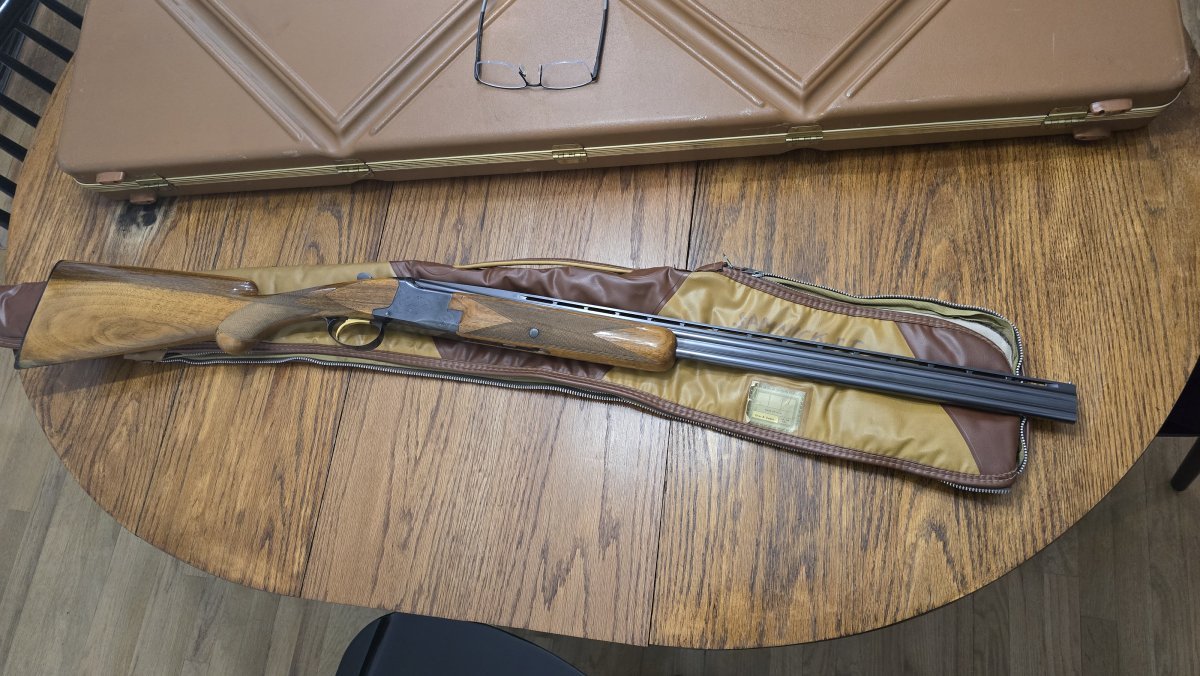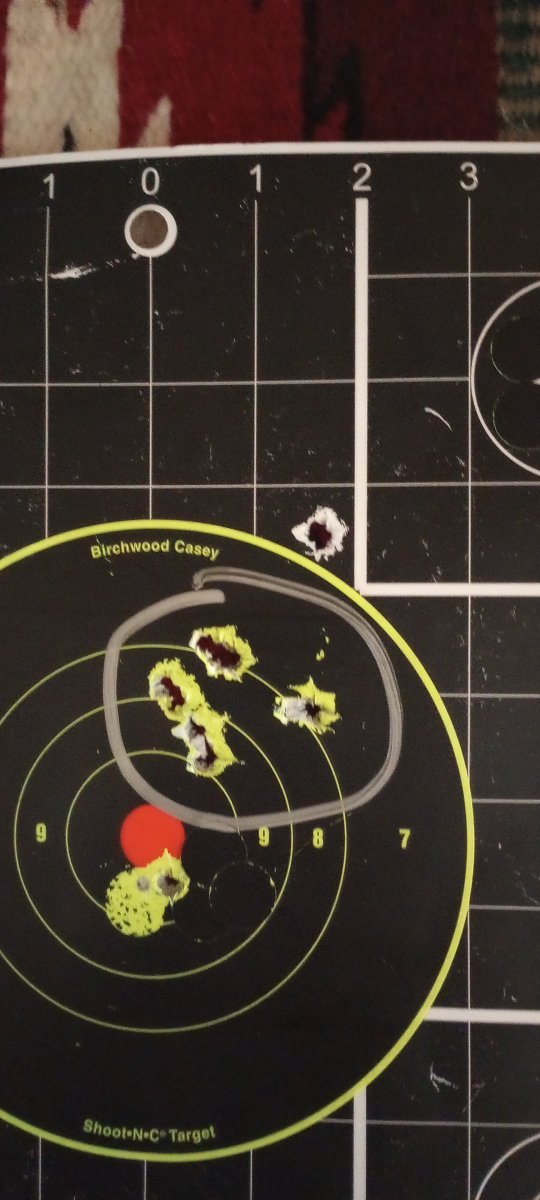It's very nice having TruPrep 10 minutes away...one of my favorite stores.I consider this an oddity:
I walked in a store yesterday with a rifle and a bunch of parts. No appointment. Walked out an hour later with my rifle, a new friend and a much better understanding of the difference between someone who can build an AR (me) and someone who mastered the process (Shep).
Long story even longer... this place (ODT) continues to impress me. I’ve had dealings with some of the finest people I’ve ever met through ODT. Yesterday was no exception.
Thank youcmshoot and thank you Truprep!
Navigation
Install the app
How to install the app on iOS
Follow along with the video below to see how to install our site as a web app on your home screen.
Note: This feature may not be available in some browsers.
More options
-
ODT Gun Show & Swap Meet - May 4, 2024! - Click here for info
You are using an out of date browser. It may not display this or other websites correctly.
You should upgrade or use an alternative browser.
You should upgrade or use an alternative browser.
A Tale of Two Crush Washers, or Two Crush Washers One Barrel, and other AR oddities
- Thread starter cmshoot
- Start date
I consider this an oddity:
I walked in a store yesterday with a rifle and a bunch of parts. No appointment. Walked out an hour later with my rifle, a new friend and a much better understanding of the difference between someone who can build an AR (me) and someone who mastered the process (Shep).
Long story even longer... this place (ODT) continues to impress me. I’ve had dealings with some of the finest people I’ve ever met through ODT. Yesterday was no exception.
Thank youcmshoot and thank you Truprep!
I had an excellent time chatting with you during the build. The overwhelming majority of the ODT are great folks.
Pic taken from an AR builder's page.
7075-T6 aluminum shouldn't be heated to over 225 degrees F, and not for longer than 15 minutes. The gentleman in the pic used a MAP gas torch to heat the upper receiver to install the barrel. This would be an example of NOT how to do it.
Can't think of a part on the AR that needs a MAP gas torch to assemble or disassemble.
A cheap laser thermometer is a good idea.

7075-T6 aluminum shouldn't be heated to over 225 degrees F, and not for longer than 15 minutes. The gentleman in the pic used a MAP gas torch to heat the upper receiver to install the barrel. This would be an example of NOT how to do it.
Can't think of a part on the AR that needs a MAP gas torch to assemble or disassemble.
A cheap laser thermometer is a good idea.
roont?Pic taken from an AR builder's page.
7075-T6 aluminum shouldn't be heated to over 225 degrees F, and not for longer than 15 minutes. The gentleman in the pic used a MAP gas torch to heat the upper receiver to install the barrel. This would be an example of NOT how to do it.
Can't think of a part on the AR that needs a MAP gas torch to assemble or disassemble.
A cheap laser thermometer is a good idea.View attachment 6109263
roont?
The upper receiver is. My recommendation would be to replace it. The receivers in an AR aren't holding a lot of pressure, so any failure caused by the excessive is highly unlikely to be catastrophic.
Not just AR's!
Had a customer bring in a Remington 700 .25-06 he had purchased used. Stainless steel with their cheap synthetic stock. Someone before him had glass-/pillar-bedded the stock, and installed a Timney trigger.
He brought it to me because the bolt release was stuck in the "release" position, and wouldn't retain the bolt.
One side of the trigger had been clumsily filed, as well as the inside of the trigger guard on that side.
From the visual inspection, you could see that the trigger on one side had about the thickness of a sheet of paper between itself and the trigger guard. On the other side, at least 1/8" gap.
After pulling it apart, I informed him that whoever had bedded the stock had done it in such a manner that the stock was rotated slightly counterclockwise. It's also possible that the stock was made that way, and should have been rejected.
The bolt release was rubbing on the side of the trigger guard. For now, I relieved it so that it functioned properly.
Customer stated that he had shot the rifle, that it shot accurately, and feed perfectly. I told him that if it were mine, I'd replace the stock and the trigger, but that there was no structural or safety reason to do so.
Everything was assembled properly and returned to the customer. All of this work was done while he waited.
Had a customer bring in a Remington 700 .25-06 he had purchased used. Stainless steel with their cheap synthetic stock. Someone before him had glass-/pillar-bedded the stock, and installed a Timney trigger.
He brought it to me because the bolt release was stuck in the "release" position, and wouldn't retain the bolt.
One side of the trigger had been clumsily filed, as well as the inside of the trigger guard on that side.
From the visual inspection, you could see that the trigger on one side had about the thickness of a sheet of paper between itself and the trigger guard. On the other side, at least 1/8" gap.
After pulling it apart, I informed him that whoever had bedded the stock had done it in such a manner that the stock was rotated slightly counterclockwise. It's also possible that the stock was made that way, and should have been rejected.
The bolt release was rubbing on the side of the trigger guard. For now, I relieved it so that it functioned properly.
Customer stated that he had shot the rifle, that it shot accurately, and feed perfectly. I told him that if it were mine, I'd replace the stock and the trigger, but that there was no structural or safety reason to do so.
Everything was assembled properly and returned to the customer. All of this work was done while he waited.
Factory Daniel Defense Mk18. This shows how clocked the receiver and receiver extension are to each other.
You won’t see that on the newer SOLGW builds, because they use the finest AR lower assembly fixture available!

You won’t see that on the newer SOLGW builds, because they use the finest AR lower assembly fixture available!
I’ve mentioned in here before that crap BCG’s have lately been the bane of my existence.
One of the issues that I see is gas leaking between the gas key and the carrier. In this pic, you can see a “fan shape” on the side of the base of the gas key where gas has been escaping.
Nitrided carriers also commonly suffer from losing gas in between the carrier bore and the gas rings on the bolt.
Add both of these conditions together, and you’ll have an AR that won’t run reliably.
If the BCG is NiB-coated, it’s definitely crap. If it’s nitrided, it’s probably crap…….with the exception of Hodge Defense.

One of the issues that I see is gas leaking between the gas key and the carrier. In this pic, you can see a “fan shape” on the side of the base of the gas key where gas has been escaping.
Nitrided carriers also commonly suffer from losing gas in between the carrier bore and the gas rings on the bolt.
Add both of these conditions together, and you’ll have an AR that won’t run reliably.
If the BCG is NiB-coated, it’s definitely crap. If it’s nitrided, it’s probably crap…….with the exception of Hodge Defense.
In this pic, you can see a “fan shape” on the side of the base of the gas key where gas has been escaping.
What's the proper fix for this?
What's the proper fix for this?
If the existing gas key has already been staked, you’ll have to replace the gas key and both screws. I use the Optimized Carrier Key Screws from Michiguns Ltd. For the gas key, I use any one of several milspec gas keys with a phosphate exterior finish and hard chrome plated bore.
Clean the mating surfaces thoroughly. I do some light polishing on the bottom of the new gas key on a flat surface to ensure it’s flat.
Degrease the top of the carrier, bottom of the gas key, both screws, and their holes.
Apply a thin coat of Permatex to the mating surface on the carrier. Make sure some gets in the screw holes, but NOT in the hole for the gas flow.
Install the gas key, torque both screws to 58 inch/pounds, and stake each screw twice. I use a Michiguns Ltd MOACKS tool for staking the gas key.
I blow compressed air down the gas key, as well as run a pipe cleaner through it, to ensure no Permatex got where it shouldn’t be.
Similar threads
- Replies
- 0
- Views
- 55






